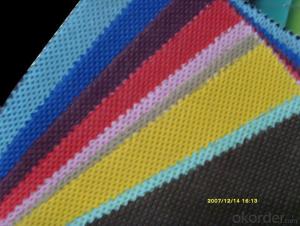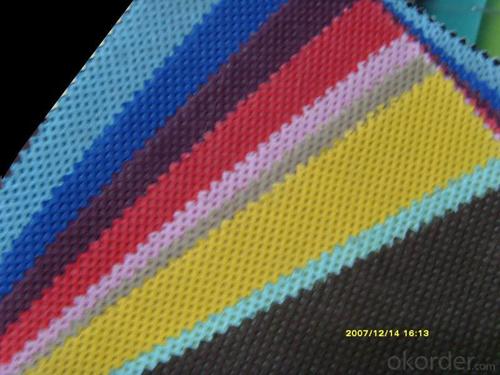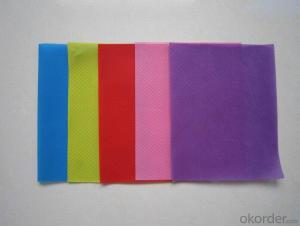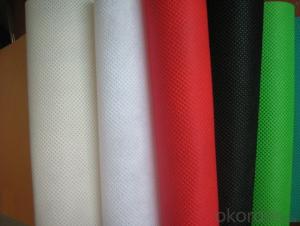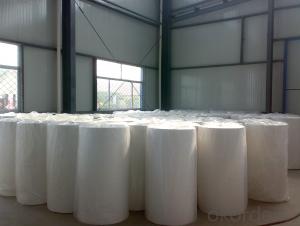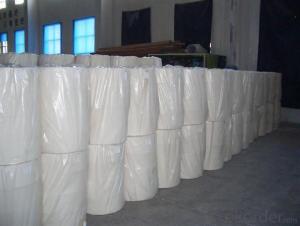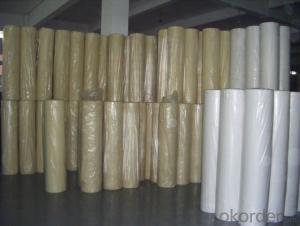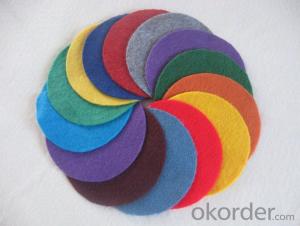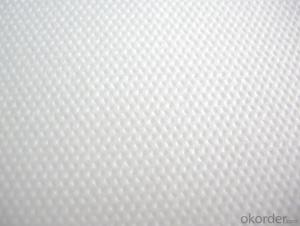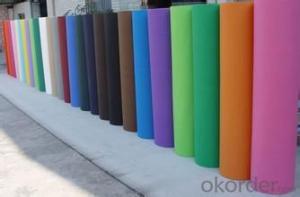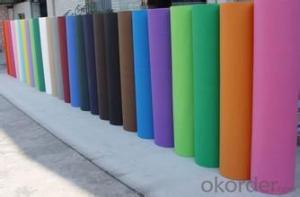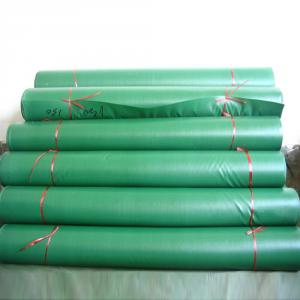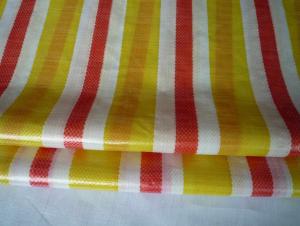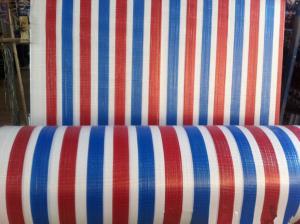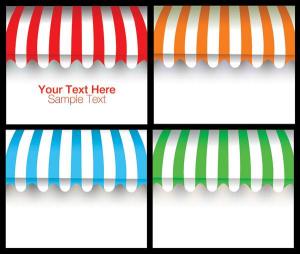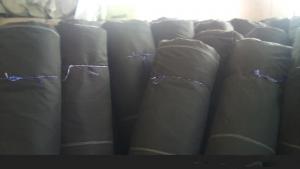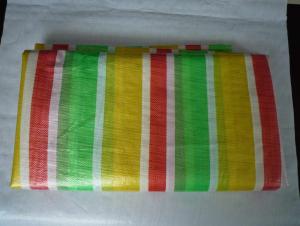non woven fabric with PERFORATED for Women's sanitary napkin ADL LAYER
- Loading Port:
- Shanghai
- Payment Terms:
- TT OR LC
- Min Order Qty:
- 1000 roll
- Supply Capability:
- 10000 roll/month
OKorder Service Pledge
OKorder Financial Service
You Might Also Like
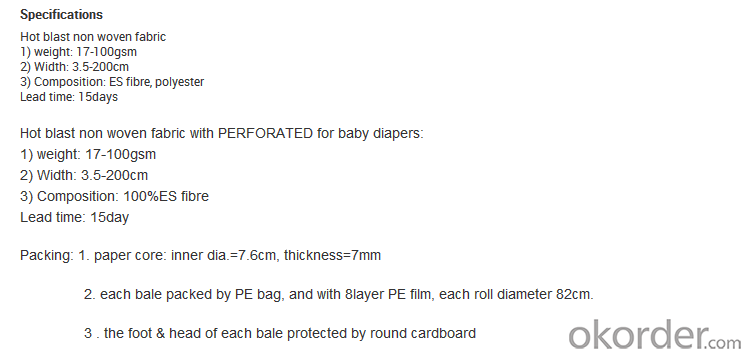 PP non woven weed control mat is made of environmentally friendly raw materials, pp spunbond nonwoven fabric. It used to prevent the growth of weed, without the use of potentially dangerous chemical sprays or labor intensive hoeing. Once installed, weed mat will continue providing protection for years without maintenance.
PP non woven weed control mat is made of environmentally friendly raw materials, pp spunbond nonwoven fabric. It used to prevent the growth of weed, without the use of potentially dangerous chemical sprays or labor intensive hoeing. Once installed, weed mat will continue providing protection for years without maintenance.
They are permeable fabrics, which allow air, water and nutrients to pass through, and designed to block out the sun to reduce photosynthesis and stop weed growth.

The use of landscaping fabrics has become extremely popular in recent years for many reasons:
1. Leisure time is maximised - the need for weeding and on-going maintenance is minimised
2. Environmentally friendly - no need for chemical based weed killers
3. Promotes healthier plants - it allows the soil to breath and water to permeate
We offer different types of weed control fabrics to suit all applications and budgets.
1. Available in a range of sizes & materials to suit various applications from small to large landscaping projects, in both commercial and domestic situations.
2. All our landscape fabrics are UV stabilised
3. Ideal for use under paths, patios, decking, paving, bark mulch, gravel etc.
FEATURES:
1. Weed suppressant and drainage control landscaping fabric
2. Spun bonded non-woven fabric – will not fray when cut
3. Easy to use
4. Environmentally friendly
5. Allows water, air and nutrients through, suppressing weeds without the use of chemicals
6. Good alternative to Plantex® where cost is a factor
7. UV Stabilised
8. Reduces the level of watering required due to the slower rate of water evaporation
FUNCTION:
1. Cover crops in the ground surface,prevent weeds and against the insect
2. Controlling soil humidity and the temperature
3. Does not affect the growth of the crops
4. Protects plants from harmfully solar radiation
5. Air permeability, water permeability help crops growth.
6. Mothproof, eco-friendly, breathable, anti-bacteria, tear-resistant, fusible
APPLICATIONS:
1. Weed block for landscaped garden beds
2. Permeable liners for planters (stops soil erosion)
3. Weed control under wooden decking
4. Geotextile for separating aggregate / soils under walkway blocks or bricks
5. Assists in preventing paving from settling unevenly
6. Landscape fabric prevents soil erosion
Health - Hygiene & Medical
Surgical Gowns
Gloves
Face Masks
Foot covers
Diapers
Caps
Bedsheets
Curtains
Pillow Covers
Slippers
Packaging
Sleeping Bags
Tarpaulins
Tents
Artificial Leather
Bags for Rice/Sugar etc.
Luggage
Vacuum Cleaner Bags
Tea and Coffee Bags
Buff Pads
Shopping Bags
Agriculture
Crop Covers
Turf Protections
Nursery Over wintering
Weed Control Fabrics
Root Bags
Containers
Capillary Matting
Other types of covers
Furniture Upholstery
Roofing and Tile Underlayment
Acoustical Ceilings
Insulation
House wrap
Pipe wrap
Sofa and Mattress Lining
Shoes & Garments
Coveralls
Pillow cases
Airline Headrests
Interlinings
Clothing and Glove insulation
Bra and Shoulder Padding
ADVANTAGES:
1. Lower labour costs as no weeding maintenance for years;
2. Water seeps through and can conserve soil moisture for improved growing conditions;
3. Air escapes – humidity rises through the mat for a more controlled growing environment;
4. Increase crop yields close to 25% due to improved growing conditions and absence of water stress and competition of nutrients absorption from weeds;
5. Minimises bacteria and fungus problems especially Algae;
6. Strong, woven construction or pressed fibre sheet resists tears and punctures;
7. Resistant to mildew, rot, water, sunlight and most of the agricultural chemicals
8. Fertilizer is applied on the mat, thus helping the owner or estate manager to monitor the progress of manuring;
9. Prevents soil erosion or leaching of soil nutrients or fertilizers applied;
10. Environmental friendly.
- Q: How can paint points be removed during textile processing?
- And butyl acetate organic solvents can destroy these macromolecule network organization, the release of paint particles
- Q: How to reduce the cost of textile yarn dyeing
- Now due to the domestic environmental protection situation is grim, dyeing and finishing agents may temporarily small ups and downs, there will not be a substantial price increases, but also not save
- Q: How to detect formaldehyde content of textiles?
- For example, textile dyeing process, in order to improve the color fastness, the need for color processing, commonly used cationic resin fixing agent Y and fixing agent M, they are dicyandiamide and formaldehyde condensate, containing a high free formaldehyde.
- Q: How to make fibrous textiles for waste plastic bottles?
- Jiangsu, a textile company to Beijing during the Olympic Games recycling waste plastic beverage bottles, the use of some surprising, the production of sports textile products! At the same time, Zhejiang Xiaoshan four companies at home and abroad extensive acquisition of waste plastic bottles, processed into fiber and then exported, one year consumption of 1 billion plastic bottles, the annual output value of over 500 million yuan
- Q: Antistatic fabrics of textile electrostatic materials
- Resulting in the transfer of charge on the surface of the object, resulting in static electricity. With the same charge of the fibers are mutually exclusive, with different charges of fibers and mechanical parts between the attraction, resulting in sliver hair, yarn hairiness increased, bad package molding, fiber bonding parts, yarn breakage increased, As well as the formation of scattered cloth on the cloth and so on
- Q: What is the difference between the nonwovens industry and the textile industry?
- To know the difference between the nonwovens and the textile industry, first look at the difference between nonwovens and textiles
- Q: Performance requirements for textile fibers
- The wear resistance of the fiber is related to the macromolecule structure, supramolecular structure, elongation at break and elasticity of the fiber. The order of common fiber wear resistance is as follows
- Q: tera textile processing where to learn
- Textile-related materials are available through collection. You can in the big city of the relevant office where the NPC get the drawings and then that textile
- Q: From the yarn to the finished textile fabric production process is how
- Nylon modified varieties such as nylon, single-cast nylon (MC nylon), reactive injection molding (RIM) nylon, aromatic nylon, transparent nylon, high impact (super tough) nylon, electroplated nylon, conductive nylon , Flame retardant nylon, nylon and other polymer blends and alloys, to meet the different special requirements, widely used as metal, wood and other traditional materials substitutes, as a variety of structural materials.
- Q: Analysis of import and export of textile
- The growth rate fell 6.2 percentage points. Textile and apparel exports totaled $ 292.1 billion in 2013, an increase of 37.8% from 2010, an average annual growth rate of 11.3%, down 3.8 percentage points from the previous year's 15.1% average annual growth rate.
Send your message to us
non woven fabric with PERFORATED for Women's sanitary napkin ADL LAYER
- Loading Port:
- Shanghai
- Payment Terms:
- TT OR LC
- Min Order Qty:
- 1000 roll
- Supply Capability:
- 10000 roll/month
OKorder Service Pledge
OKorder Financial Service
Similar products
Hot products
Hot Searches
